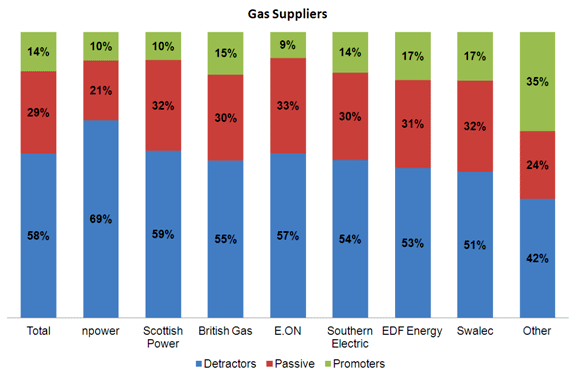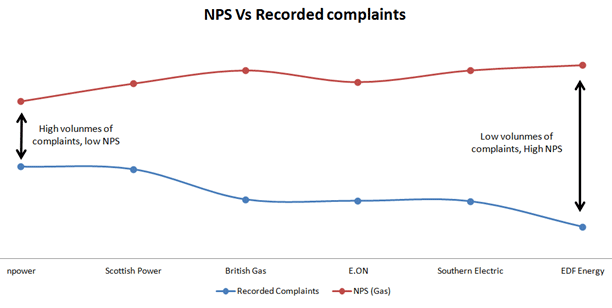 |
|
 |
|
Jeremy Marshall Jeremy has worked for Opinium since 2010, when he joined to launch a website mystery shopping offering and lead other parts of the research business - most notably, B2B, customer satisfaction and multichannel mystery shopping. Prior to this Jeremy was a senior consultant at Enterprise Planning & Research Ltd and before that, Director of Strategic Analysis at Nielsen Online. Read the full biography here.
Paul Crooke For the last nine years Paul has been working in market research and media evaluation. His clients have included the BBC, Ofcom, O2, MTV and ITV. He has also worked on academic research projects covering voting intentions, perceptions and involvement in society across multiple countries. Read the full biography here.
|
Net Promoter Score a simple plan or a bridge too far? By Paul Crooke and Jeremy Marshall - 16th December, 2011
It was Albert Einstein who said that, ‘Everything should be made as simple as possible, but not simpler’ whilst referring to science. He might just as well have been talking about market research where, as a profession, we are frequently guilty of blinding clients with over-complicated methodologies and reporting.
For example, customer satisfaction tracking studies frequently start out with just a few questions and then, over time, new questions get added, until the whole survey process becomes unwieldy for both respondents and for generating insight. Enter Net Promoter, a customer loyalty metric developed in 2003 by Fred Reichheld, Bain & Company and Satmetrix which allows companies to measure and compare customer loyalty of their brands and products against their competitors to help drive business growth.
How does Net Promoter work? Customers are asked a single question - 'How likely is it that you would recommend our company to a friend or colleague?' on a 0 to 10 rating scale, where 10 is 'extremely likely' and 0 is 'not at all likely'. Based on their responses, customers are categorized into one of three groups: Promoters (9–10 rating), Passives (7–8 rating), and Detractors (0–6 rating). The percentage of Detractors is then subtracted from the percentage of Promoters to obtain a Net Promoter Score or NPS (Promoters – Detractors = NPS).
Does it actually work? To test the concept, we asked a nationally representative sample of 2,000 UK adults how likely they would be to recommend their current gas or electricity supplier. We felt this was a good test for NPS, in view of the adverse publicity energy suppliers have been receiving recently.
As may be seen in the chart below, npower had the worst Net Promoter score in this example at -59 (Note: some people choose to include the percentage sign in the reporting of NPS and other choose not to). Consistency is everything here; one of Reichheld points is that you should asked the NPS question, decide on how you are going to ask it, stick to it and then focus on the customer feedback of what you are getting right and/or wrong.

According to Reichheld 'Many firms - and some entire industries - have negative Net Promoter Scores, which means that they are creating more detractors than promoters day in and day out.'
Mark Ritson, a regular contributor to Marketing Week, said of NPS 'There is no point comparing your score with brands in other industries. It’s also a mistake to use NPS to compare how a brand performs in different countries because different nationalities are more or less likely to recommend. The only comparisons that count are your NPS versus your competitors and how your score has changed compared with previous years.' Mark Ritson, Associate Professor of Marketing and Columnist - Marketing Week, 16 February 2011.
So in isolation, the NPS score does not arguably mean that much, so we decided to test it against another criterion – number of customer complaints – to see whether there was a relationship. As may be seen in the chart below, British Gas and npower were two of the firms with the highest number of recorded complaints.
No surprise, therefore, to learn that, in July, British Gas was fined £2.5 million by Ofgem for not having recorded complaints properly. Last month, npower received a £2 million fine for the same offence.
We then compared the Net Promoter scores with the actual number of complaints received. We transformed the Net Promoter Score in order to plot a relationship on the same chart; the chart below is for illustration purposes.

What this clearly demonstrates is that the firms with the highest number of recorded complaints also had the lowest Net Promoter scores. Not conclusive proof, of course, that NPS really works, but interesting nonetheless and indicates that NPS is a good measure of how brands/companies perform against their competitors. Companies with the lowest number of complaints typically had the highest NPS and possibly a greater interaction with customers. As for Scottish Power – which had a high number of detractors in our survey, we were unable to compare complaints with NPS scores, the company currently operates a complaints process which falls outside Ofgem requirements.
The findings have certainly given us some food for thought. It is significant also that an increasing number of our clients are catching on to NPS and asking us to incorporate it into customer satisfaction tracking surveys in order to compare themselves against their competitors, though not yet to the exclusion of the many other types of satisfaction criteria clients rightly demand. Today, that would be a bridge too far, but in the future....

Sources:
Reichheld, Fred. The Ultimate Question: Driving Good Profits and True Growth, Harvard Business School Press, 2006.
Opinium Research carried out an online survey of 2,012 UK adults aged 18+ from 1st November to 3rd November 2011. Results have been weighted to nationally representative criteria. www.opinium.co.uk.
All UK energy suppliers are required to publicly report their recorded level of complaints annually by Ofgem. It defines a complaint as any expression of dissatisfaction that is not resolved by the end of the first day after the day that the complaint was received. Complaint numbers and customer figures are taken directly from suppliers own websites or in the case of the latter from other publicly available sources. Figures taken from Ofgem published figures compiled by Ecotricity here.

Paul Crooke and Jeremy Marshall
Comments on this article

Want to share your thoughts...?
NOTE: Please note that this board is moderated, and comments are published at the discretion of the site owner.
|